Bright summer flowers inevitably fade with the change of season. But the best winter plants for pots will lift your spirits and make your garden more beautiful despite the cooler temperatures and darker nights.
There are plenty of stunning outdoor space ideas that will make you smile on those cold days. But one of the best ways to brighten up the outdoors is to plant some beautiful containers.
With beds and borders looking a little bare during the coldest season of the year, using pots is a great way to add interest to your garden in the coming months. Of course, many winter plants for pots also provide vital nectar to feed wildlife—another reason to include them in your garden.
To inspire you, we’ve rounded up our favorite winter plants for pots to use in your containers for a stunning display.
From evergreen foliage to bright flowers and vibrant berries, winter flowering plants and houseplants are a great way to create a beautiful winter oasis that doesn’t have to wait for early spring.
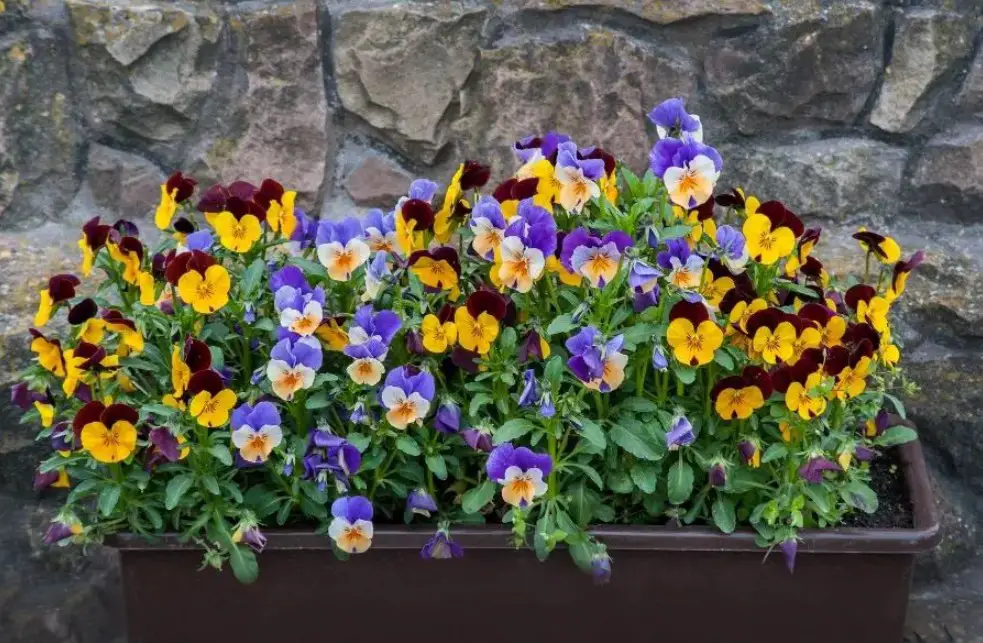
Ideal winter plants for pots
1. Camellia
Camellias are popular winter plants for pots, but they also work well in containers.
They also bloom in a variety of shapes and colors during the colder months and are a great choice to add to your home as they outgrow their containers.
They can be transplanted into the yard and garden.
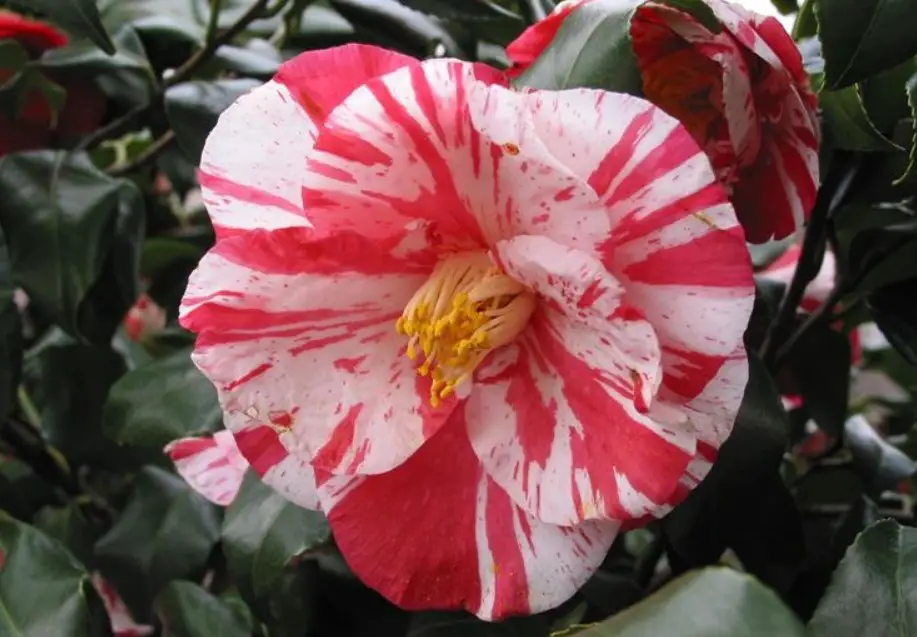
2. Winter garden
Potted wintergreens (or Gaultheria procumbens) make a great addition to outdoor Christmas evergreen shrub decorations with their bright red berries. Alternatively, try Gaultheria ‘Pearls’, which has white berries with a pink tinge. Both will grow in full shade.
Transplant these dwarf deep green foliage into a larger container or in borders as a ground cover when it’s time to freshen up winter pots. However, be sure to wear gloves when handling these plants, as they are poisonous.
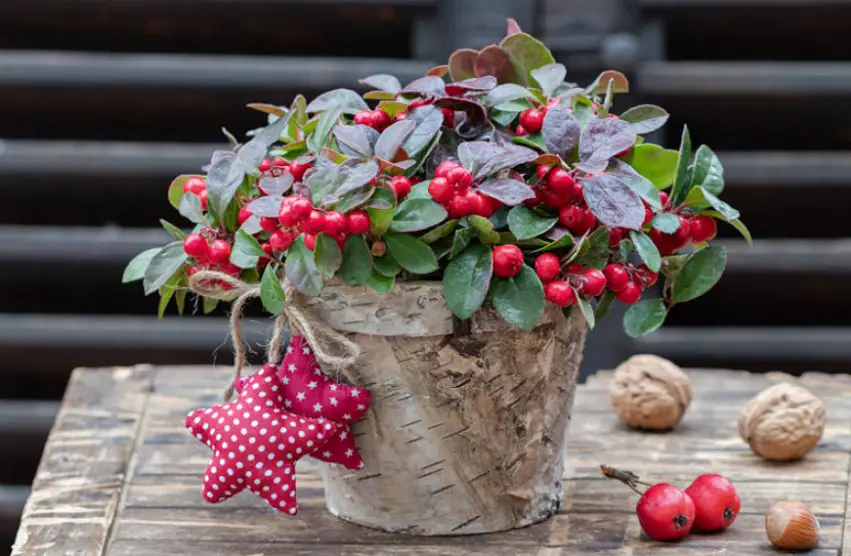
3. Box hedge
Boxwoods make easy-to-grow winter plants for pots evergreens that can be used as hedges, borders, or in pots.
They are hardy plants that can withstand harsh climates and low temperatures.
If possible, rotate the pot regularly to distribute the sun’s rays on the plant and promote uniform growth.
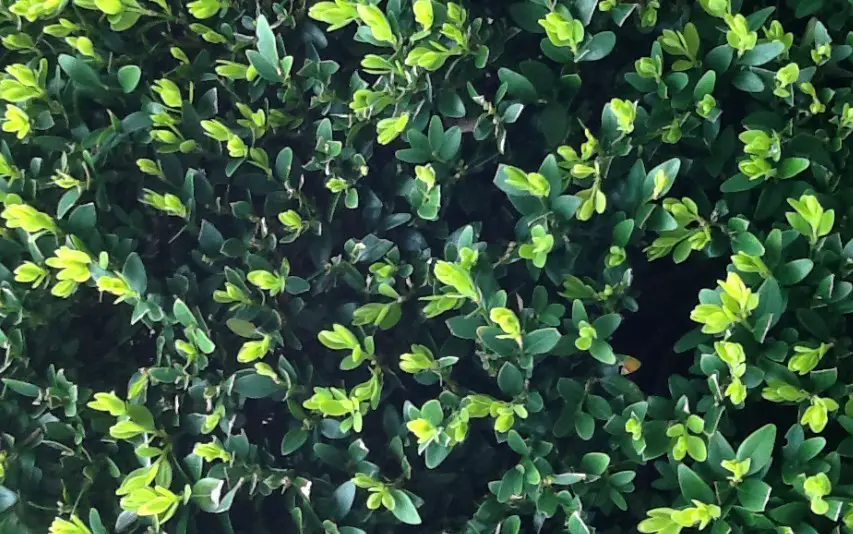
4. Cyclamen
Another essential element of the winter pots. Cyclamen copes perfectly with winter conditions and blooms from autumn to spring. Some cyclamen species should be grown indoors, so make sure you choose Cyclamen hederifolium or Cyclamen Coum for outdoor pots.
If you decide to upgrade your containers, place your cyclamen in a shady spot in your garden. They look beautiful next to ferns and other forest winter plants for pots.
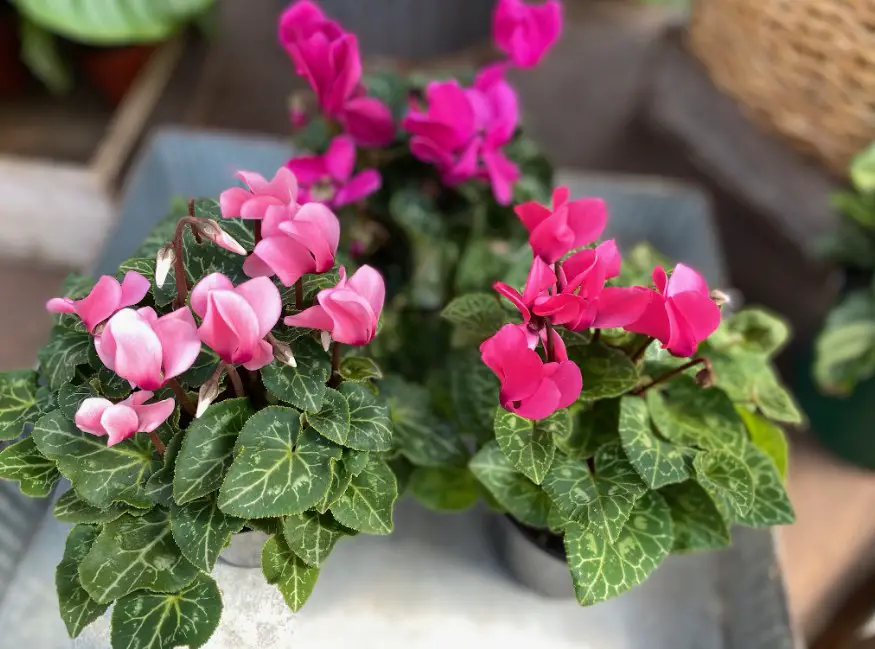
5. Primulas
Primula is a classic winter bedding plant that adds bright color to the window. Some are sturdier than others, one of our favorites is zebra blue with stripes and a yellow center. It blooms from late winter to late spring and grows well in partial shade. Take a cue from this build and add textured branches to the ground for added height and drama.
As perennials, you can save these post-season beauties by planting them in your beds. As they grow, they form large clumps that can be divided for more vigor (and “new” loose plants).
Summer or fall is the best time to do this: “Simply pick up the plant and with two hand forks placed back-to-back, close together, break it up into large, rooted pieces,” says gardener John Negus. Hobby gardeners plant them in a shady spot in the summer and place them where you want them to flower in the spring and fall.
Polyanthus – a type of primrose that flowers in umbels – is also one of our favorite winter houseplants. Prune flowers often to encourage abundant flowering.
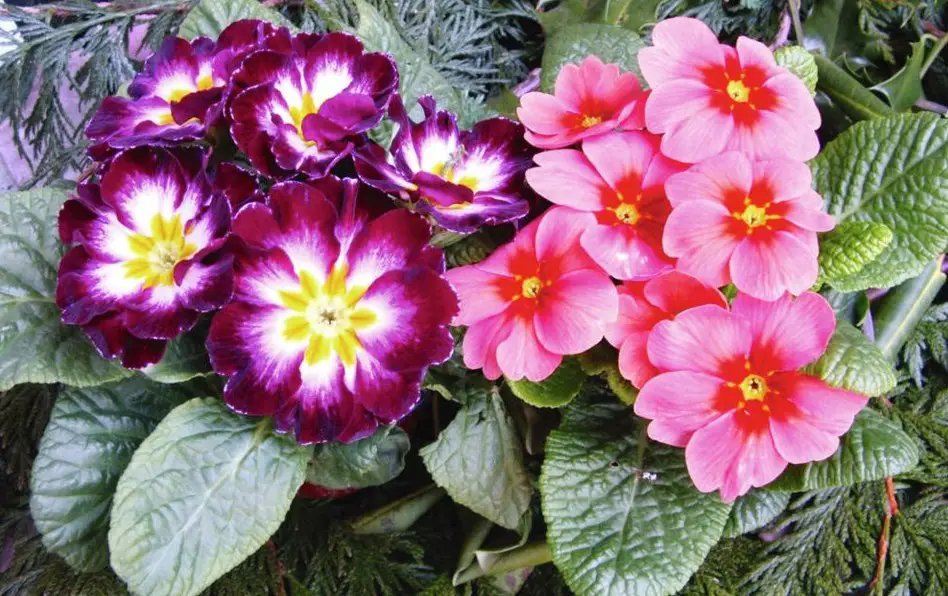
6. Viola odorata (sweet violet)
Violas generally produce many beautiful flowers, but Viola odorata is the blue viola most often found in people’s gardens.
They are also known as forest violets or common violets. They thrive in cool weather and can thrive throughout the summer months with proper care.
Violas are not only wonderful plants that add vibrant color to your home, but they are also edible. So if you like using edible flowers, this is a great place to start.
Violas don’t require too much maintenance and are relatively easy to care for.
They need regular watering and a spot in partial shade.
Be sure to remove fallen leaves and flowers regularly, as this will prolong the flowering period.
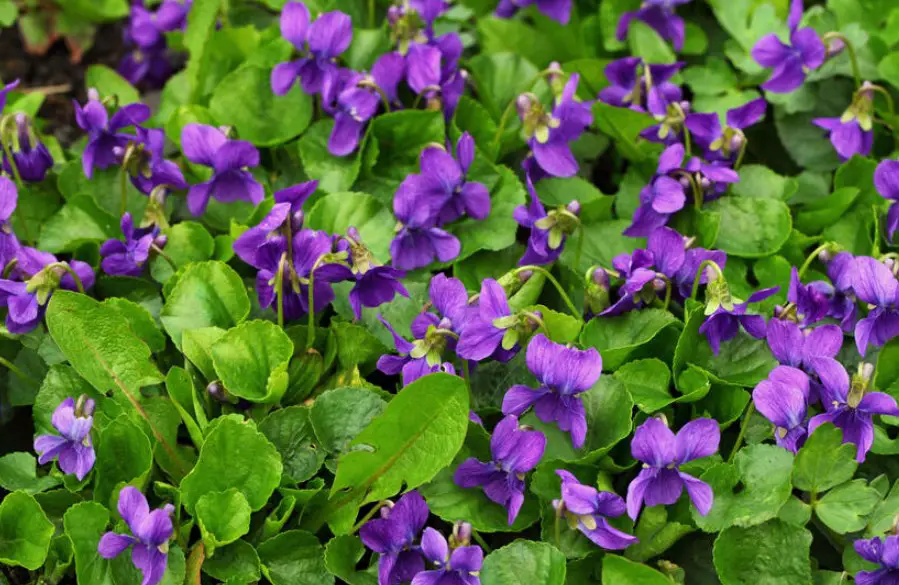
7. Primus
If you’re wondering, “what should I plant now for winter color?”, primroses may be your best plant.
Walk into any garden center during the winter, and you’re almost certain to find a great selection of primroses. They are often available in bright colors.
So if you like the idea of a powerful display, they are a good and inexpensive filler for your vase. When gardening with kids, these bright colors are always a big hit.

8. Winter Irises
The winter lily decorates any terrace or entrance door with its delicate structure and precious colors. These compact iris varieties are among the first bulbs to flower in late winter, making them a fantastic choice if you want your winter planters to bloom into spring. Popular varieties include Pauline, Harmony, and Frozen Planet (Ice White).
For variety, when planting in your winter container, choose the icy-white ‘Frozen Planet,’ which has bright blue petals and blooms from early winter through spring. Polina is another great choice that offers a subtle plum color.
In fall, plant bulbs in well-drained soil and place containers in full sun for best results. Depending on the type, each plant grows to about 6 in (15 cm).
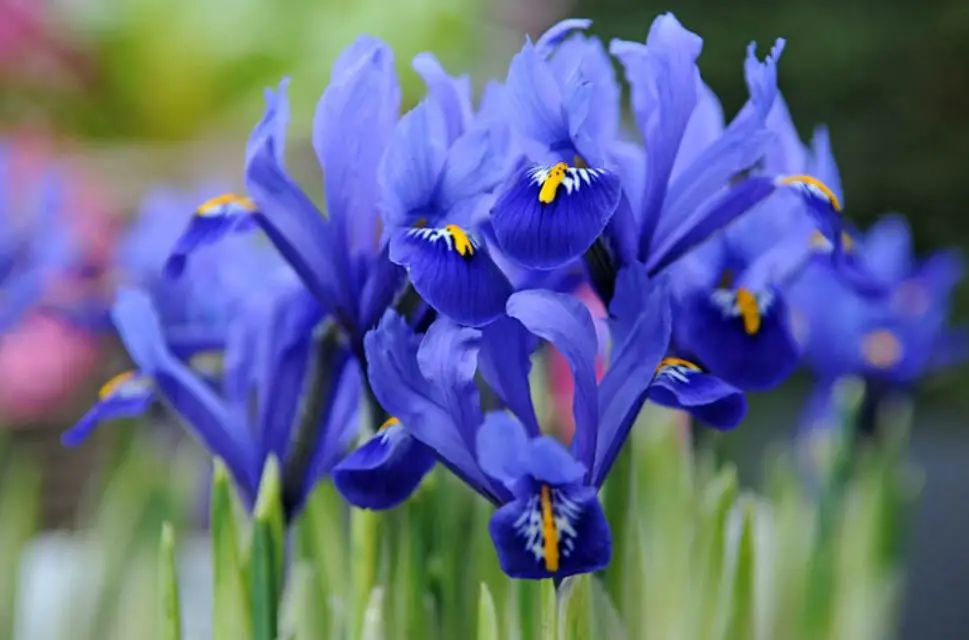
9. Winter Pansies
Winter Pansies are hardy plants that can withstand freezing temperatures and thrive in the summer.
Lack of water is one of the most common problems with Pansies, so feel free to give them the water they need. Just make sure they have good drainage.

10. Heather
Heather plants add texture to your winter pots. Choose from a subtle white or off-white, or go for a vibrant color with pinks and purples.
Heather is a good choice if you want to nurture wildlife in the garden as well, providing a source of nectar and pollen for pollinating insects at times of the year when other plants are not growing. As such, it is a wonderful plant for a bee-friendly garden.
Heathers prefer to grow in acidic soil, so try planting them in heather compost to create the best conditions for them.
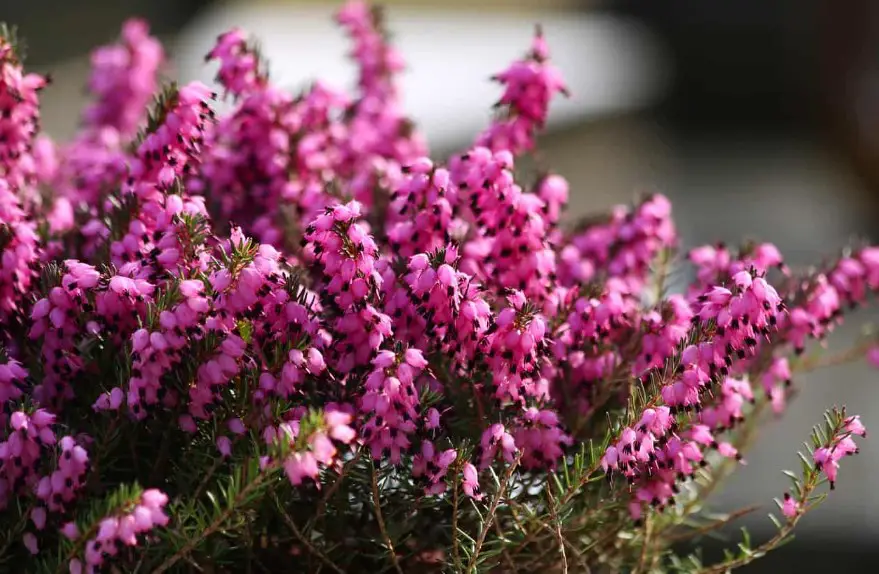
11. Winter aconites
A wonderful garden plant, winter aconites sunny yellow flowers bring a sense of security. “After flowering, plant them in humus-rich, water-retaining soil in partial shade to allow them to root,” suggests the Home Gardening team.
They do not grow very large – only about 4 in (10 cm). Try planting a group of smaller pots for instant growth, or place bulbs around the perimeter of a larger container.
Pollinators love these buttery blooms, so they’re perfect if you’re looking for zoological garden ideas.
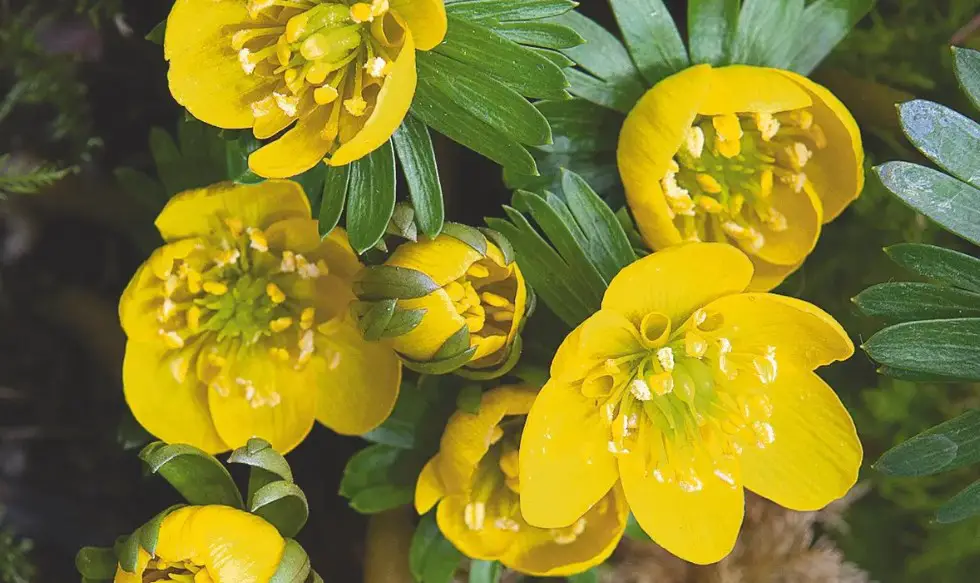
12. Gaultheria Procumbens (Wintergreen)
This is a plant you’ve probably seen before because it has showy red berries. These outdoor plants love acidic, moist but well-drained soil.
They do not need much water and can grow in full or partial shade.
When it comes to hardy-potted plants, wintergreen is one of the best choices.

13. Heucheras
Coral bells, also known as heucheras, have beautiful flower stems in summer. However, its showy semi-evergreen foliage makes it a good winter color plant, especially in areas where temperatures don’t drop too low.
Home gardeners suggest trying jam with caramel and rose petals to warm up the winter scene. As shown above, choose black pearl for a moody and dramatic tone, while sugar frosting looks deliciously festive against ruby viola.
Plant them in moist, well-drained pots in full sun or partial shade.
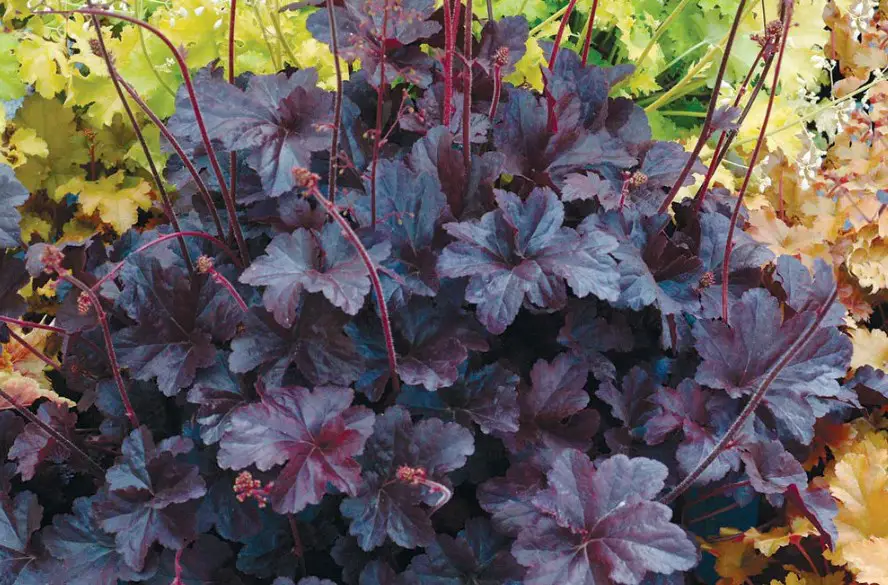
14. Clivia
Clivia has thick, dark green, long leaves and flowers in winter with 15-20 flowers.
During the winter months, clivia needs little water and loves shade.
If you want to grow a winter dish that’s affordable and effortless, yet looks amazing, you should definitely add some florets.
Many bulbs make their true appearance in the spring, but some varieties only begin to flower in late winter. These early bloomers are a great way to keep your containers in good condition until the spring blooms are over.
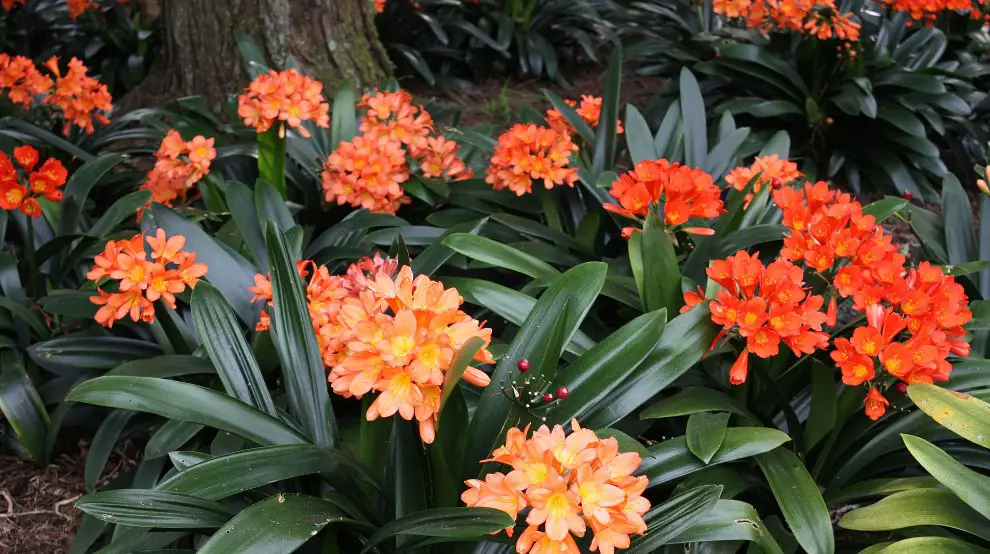
15. Snowdrops
Snowdrops are often the first flowers we see in the garden at the end of winter, so they can bring a taste of spring when planted in winter pots.
Snow flower bulbs are usually planted in autumn, but you can also buy them as flowering plants in the late winter months.
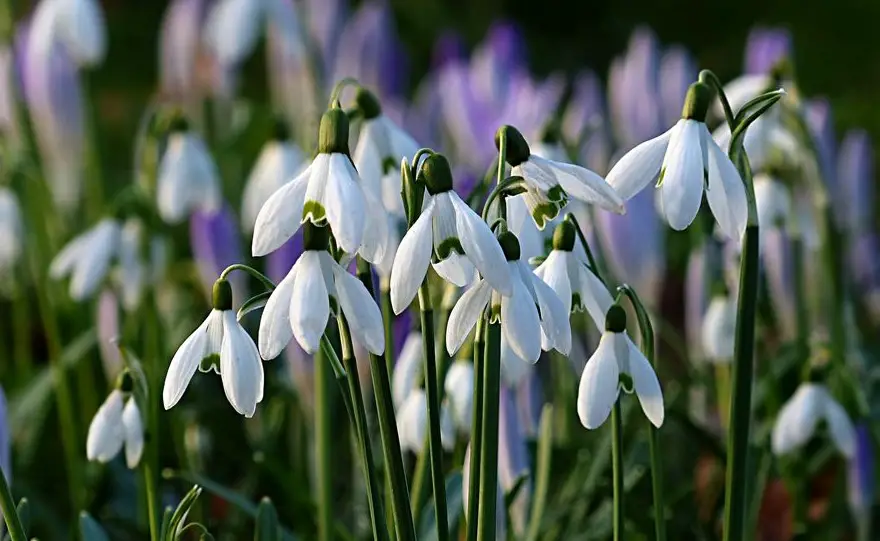
16. Pansy and violet
Make a pansy dish, and you’re sure to enjoy it all fall, winter months, and early spring. These houseplants are some of the best plants for beginners, as long as you follow a few simple rules. Choose plants labeled “winter flower” to ensure they thrive in colder weather.
Plant them in early fall, so they will sprout before frost. Plant in multipurpose compost winter pots with a handful of sand to aid drainage. During dry periods or Indian summers, make sure the compost is moist – plants can still dry out and die in the colder winter months.
Pack a container with plants for full exposure. Regular pruning of flowers will make them bloom again. For added impact, choose one color rather than a mix of shades – try ‘Giant Swiss Orange’ for a golden hue or ‘Cool Raspberry’ for a velvety plum pillow.
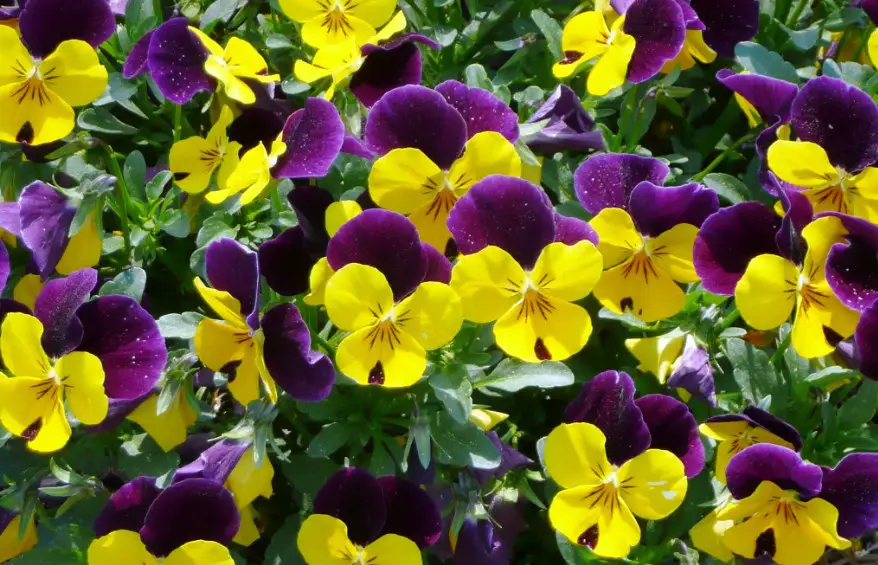
17. Foliage plants
Open container planted with ivy, yellow primrose, ischium, Calocephalus brownie, and Solanum pseudocapsicum.
This stunning dish features textured Calocephalus on the left, along with drooping ivy, yellow primula, ischemia, and the cheerful orange berries of Solanum pseudocapsicum.
Overwintering vessels do not necessarily have to be decorated with flowering plants: there is a wonderful selection of deep green plants in the garden center or the mail-order business. Choose plants with dull leaves and interesting shapes, like the Calloscephalus you placed in this pot above.
You can also try the hairy leaves of the dust miller (Senecio cineraria) or the showy leaves of the ornamental cabbage-like northern lights, which intensify in color as the temperature drops.
A mix of similarly colored foliage plants looks fantastic in a pot. Soften the edges with easy-growing trailing evergreens like ‘White Wonder’.
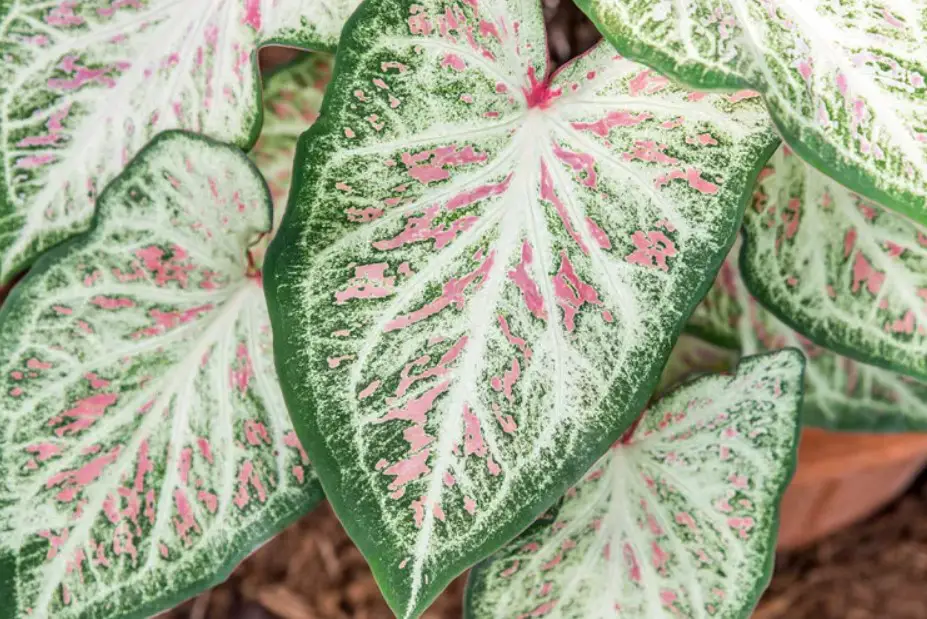
18. Japanese Yew
This plant is suitable for the porch as it tolerates drought all year round. It can also grow in full and partial sun.
Mostly used as ground cover or in winter containers.
However, it can also grow as a tree and reach a height of over 50 feet.

19. Billion
Christmas roses or hellebore add a romantic touch during the colder months. They come in a subtle rainbow of colors, from pure white and dusty pink to deep apricot and purple, and can withstand cold conditions like frost and snow.
Hellebores are mostly evergreen, blooming in mid-winter and continuing into early spring. They can be combined with other plants in a pot, but simple winter containers of the same color will create the greatest impact.
Plant them in multipurpose compost in a container deep enough to sit on top of your existing compost. Water well and put in the shade.

20. Ligustrum
It grows well in full sun to partial shade and is a fairly popular choice as an ornamental houseplant, particularly in the Southwestern United States.
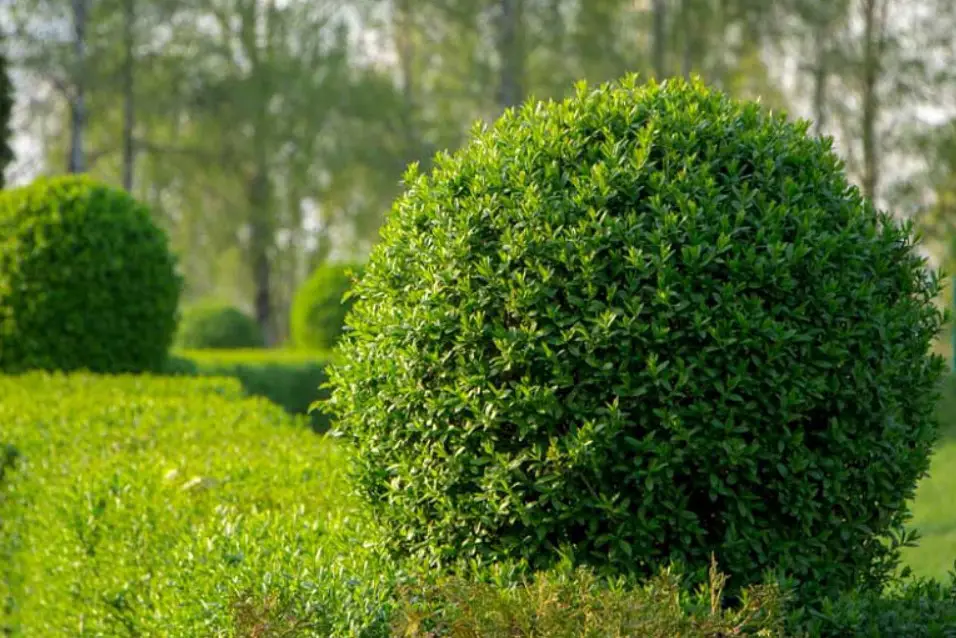
21. Hotinia “Little red robin”
If you are planting a large winter container, this evergreen shrub will make a great addition. It displays a display of bright red leaves that turn dark green as they mature. You get white flowers in spring.
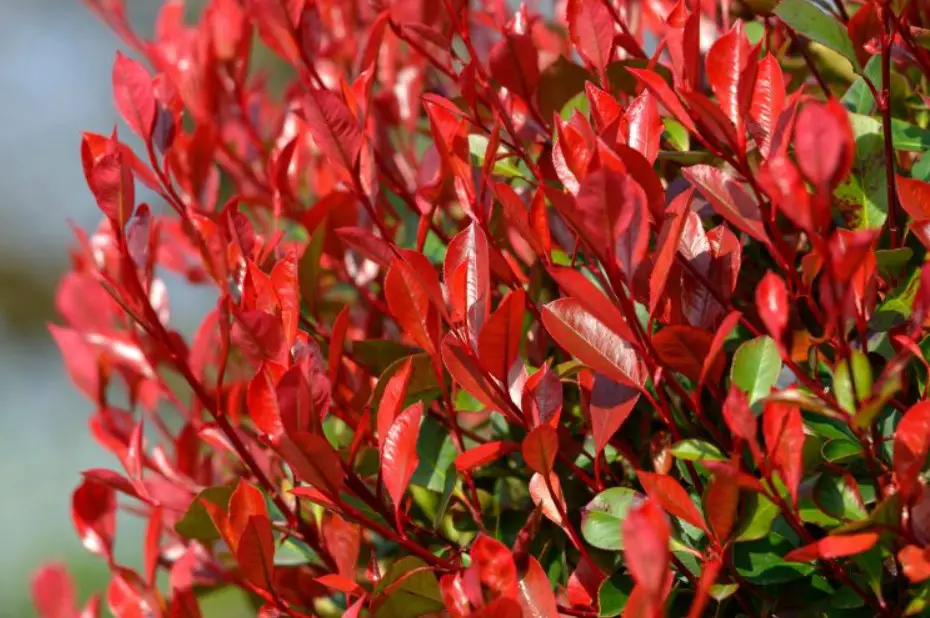
22. Aromatic plants
While we associate aromatic plants with hot summer days, there are some cool-weather heroes that are perfect to place on your porch for a burst of winter scents.
Sarcococca Confusa is a great option for the best winter potted plants. It has many cobweb-white flowers in winter on glossy evergreen leaves that turn to blackberries in summer. It is an easy-care plant that does not require pruning. Just remove dead branches in late spring. For best results, plant them in compost and keep the soil moist.
For a lovely citrus scent in a pot, try honeysuckle, which has creamy flowers on semi-bare branches. Plant in large winter containers for best results.
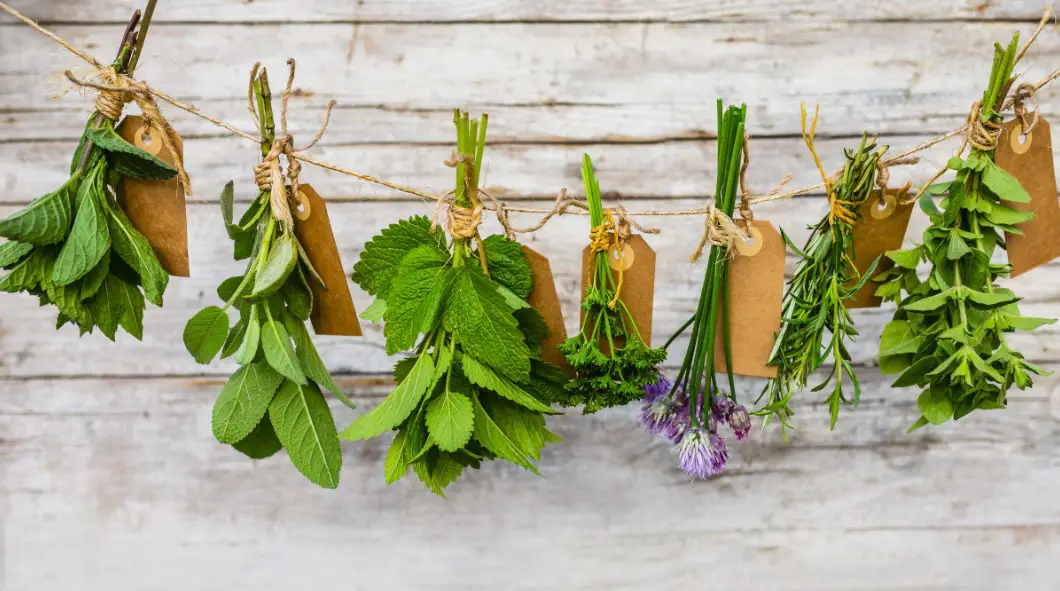
23. Creeping Jenny
Creeping Jenny is an ivy-like plant that does well as a ground cover but can also be grown in pots, particularly in a hanging pot or tall vase to create a vine-like effect.
They do well in full sun or partial shade. Make sure the containers have good drainage, but water regularly to keep the soil moist.
Creeping Jenny is also well suited as a houseplant but likes a cooler spot in winter.

24. Ivy
If you are looking for winter hanging pots, ivy is a good choice. Ivy also makes a great hanging pot plant.
Ivy can be a bit of a racket in the garden, killing other plants and generally taking over. Growing in a container avoids all of this and allows you to enjoy beautiful leaves without the hassle. Ivy is an excellent food source and winter shelter for pollinators as well as native wildlife.
The ivy-hanging habit is especially useful for softening the edges of a container or hanging basket. It’s also a clever way to make a large display out of a pot of the same size.

25. Festucka glauka
Ornamental grasses fit perfectly in a modern garden, but some are perennials that die back in winter. Add in a few pots of fragrant blue fescue (Festuca Glauca), however, and you get more bang for your buck with year-round texture and soft blue-green color.
Clusters of prickly leaves look especially good in galvanized containers. They need moist, well-drained soil, so add a handful of sand to the compost when planting.
Grasses may benefit from being divided every three years to prevent them from rotting. They bring joy to the coldest days with a brilliant matte coat.

26. Hellebore niger (Christmas rose)
This evergreen plant has a rose-like flower and is affectionately known as the Christmas rose.
When the weather turns bad, the wild white rose feeds on it and produces large, round, white flowers with lots of dark green leaves.

27. Blue spruce
The blue spruce is visually the perfect winter plant. It is hardy in zones 2-7, prefers full sun, and is suitable for most climates.

28. Cineraria
This is one of my favorite green plants for outdoor pots – my garden is full of them! Cineraria has silvery white foliage with a soft touch surface and provides a beautiful textural background for your flowering plants. It is also a tough little plant in my experience. So if you cut it regularly, you may find that it’s one element of your dishes that you don’t need to replace.

29. Snowdrop
They’re among the first spring bulbs to poke through the soil in winter, and a pot or two of snowdrops make a welcome boost.
Snowdrop bulbs can be planted in autumn, or they can be grown ‘green’ (with leaves still attached) in spring for flowering the following winter. They are happiest when grown in soil at the edge of a shady garden or raised bed – those grown in containers will need to be repotted every year.
Don’t forget the giant snow flower (Galanthus elwesii) – it has large, honey-white flowers atop blue-green leaves.

30. Forced bulbs for indoors
Winter containers are not only for the street. Growing flower bulbs is a beautiful way to brighten up your interior and enjoy early spring flowers. There are many varieties to try, from Muscari (as seen above) to daffodils and hyacinths.
Hang them, decorate a mantel or place them in the middle of your dining table – everyone who sees them will be happy.

31. Sweet box
Another good choice for a larger pot is the cornflower (Sarcococca confusa), which has dense, evergreen foliage and produces many delicate white flowers from mid-winter. The flowers are also very fragrant, so make sure you place them where you pass regularly to make the most of the great scent.

32. Calloscephalus
I love using this foliage plant in containers too. It’s super chewy, but the silver stalks are soft and foamy. I always have to think about Marjan. A great plant to contrast with dark purple flowers or foliage.
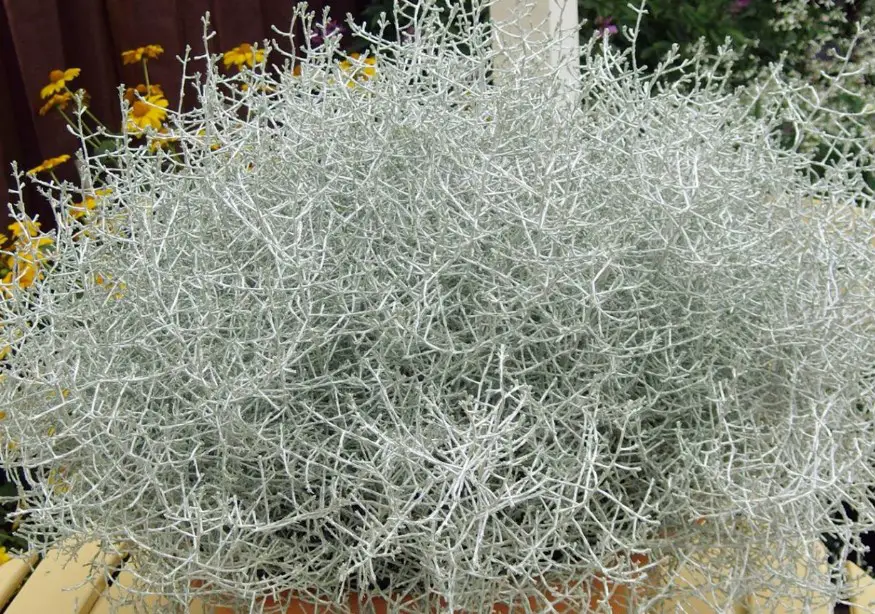
33. Ornamental cabbage
When temperatures drop, ornamental cabbages and kale are foliage plants that produce bright foliage that only intensifies in colder weather.
Another good idea if you have a larger pot is to place your ornamental cabbage in the center and place the pansies in the surrounding soil.
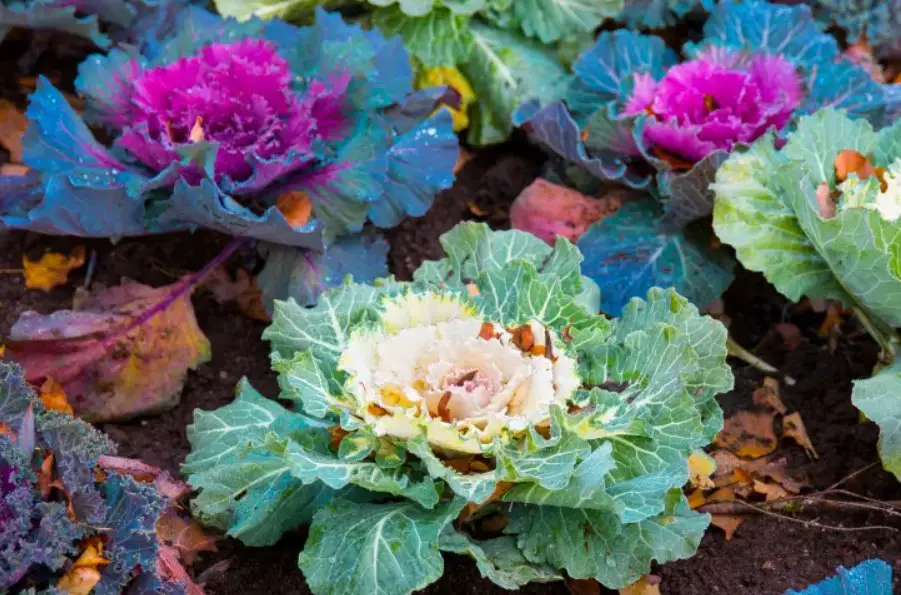
34. Fermium
This upright weed is ideal for adding structure and height to a pot. There are several colors to choose from, including yellow, pink, and deep burgundy.
Although phormiums are relatively hardy plants, it is best to grow them indoors in winter.
How to plant a winter container
Once you have your plants, pots, and tools, you can create beautiful seasonal displays of winter plants for pots. Here’s a quick guide to planting pots outdoors for the winter.
- Start by placing a layer of “pots” (these are just parts of an old pot) or small rocks in the bottom of the pot. This helps drain excess water.
- Add compost to the pot until it is almost full.
- Carefully remove each plant from the pot, being careful not to damage the roots. A good way to do this is to run your fingers along the base of the plant, then tilt the plant and pull the pot away with the other hand.
- Place the plants on the compost. You can move them around until you are satisfied with the arrangement. It’s a good idea to place taller plants at the back of the pot and make sure hanging plants are close to the edge, so they overflow.
- When you’re happy with your arrangement, fill the gaps around the plants with compost.
- Finally, water the pot and put it in the final position.
Feed winter plants in pots
As I mentioned earlier, a container plant will eventually use up all the nutrients in the compost. To avoid this problem, you can feed your plants regularly with an all-purpose plant fertilizer.
You can choose your vegetarian menu format according to your taste. A concentrated liquid must be diluted before use (the package will tell you how), so you’ll need a watering can for this option.
Fertilizer also comes in the form of seeds that you add to your compost when planting, and ready-to-use liquid fertilizer that you simply pour into your pot. If you’re nervous about fertilizing properly, the last option is certainly the easiest, but remember that it’s also probably the most expensive and least efficient way to fertilize your winter flowering plants.

FAQ
What plants will survive winter in a container?
The best winter plants
- Viola. It’s no surprise that the viola is the most popular winter potted plant.
- Pansy. Wonderful winter plants and pansies can survive frost and thrive when summer returns.
- Clivia. Clivia is popular as an indoor flowering plant. Long thick dark green leaves grow from a giant bulb.
- Hellebore. Few plants can compete with hellebore for winter hardiness.
- Lily of the valley. The lily of the valley has delicate, bell-shaped, white flowers.
- Boxwood. Boxwood is an ideal winter plant for pots.
What plants are good for outdoors in the winter?
The weather is getting colder, and the beauty of the garden in spring and summer becomes a distant memory. But just because winter is coming doesn’t mean your garden has to die. There are many outdoor winter plants for pots that survive the winter.
Here is a list of ten conservatory flowers and winter plants for pots that will help keep your yard beautiful all year round.
Plants that survive the winter:
- Coneflower (Echinacea)
- Lily of the valley
- Blue spruce
- Wintergreen boxwood
- Catmint
- Coral bells (Heuchera)
- Pansies
- Hostas
- Winterberries
- Primrose
What pots can be left outside in winter?
If you have chosen hardy container plants, they should do well outdoors in winter. However, if you have tender potted plants, it’s a good idea to move them to a more sheltered spot until the weather warms up again. My contribution to protecting plants from frost and cold goes into more detail and talks about winter plants for pots that can survive the winter outside.
What perennials survive winter in pots?
Perennials that usually winter well in containers:
- Achillea (yarrow)
- Ajuga (bug)
- Alchemilla (Lady’s Robe)
- Armeria (Common Thrift, Sea Pink)
- Aster
- Bergenia (Heartleaf Bergenia, Pig Squeak)
- Brunner macrophylla
- Bell (bell)
- Cerastiy (Snow in summer)
- Clematis
- Coreopsis (Tickseed)
- Carnation (Pink)
- Echinacea (Echinacea)
- Ferns
- Geranium (Hardy, Crane)
- Hemerocallis (daylily)
- Heuchera (Coral bells)
- Heucherella (Foam Bells)
- Hosta
- Houttuynia (chameleon plant)
- Iris Ensata (Japanese iris)
- Lamium
- Lysimachia nummularia (Creeping Jenny, Moneywort)
- Lysimachia Punctata (variegated loosestrife)
- Myosotis (forget-me-not)
- Phlox subulata (creeping phlox)
- Polemonium (Jacob’s Ladder)
- Primula (Primula)
- Pulmonaria (lungwort, Bethlehem sage)
- Sage (Salvia perennial)
- Scabiosa (pincushion flower)
- Stonecrop (sedum)
- Sempervivum (Chicken and Chicks)
- Thymus (creeping thyme)
- Tiarella (Foamflower)
Can flower pots stay outside in winter?
Usually yes. There are many hardy perennials and evergreen shrubs that are hardy pot plants for the outdoors and in winter.
However, container plants or shrubs are a little different than plants in the ground. You rely a little more on your care.
If your winter plants for pots can tolerate two colder zones than yours, it is probably a good candidate for surviving the winter in a container.
Conclusion
That’s all! Everything you need to know about the best outdoor plants for winter pots and how to care for them. I hope this guide has inspired you to create fabulous winter plants.
Read also: How to Overwinter Lantana (2 Incredible Ways)
- Why Are There Still No Tomatoes in My Tomato Plants? Let’s Fix the Issue! - July 13, 2023
- Water Propagation White Stuff on Roots: Everything You Should Know! - July 11, 2023
- String of Dolphins Drying Up: Solved! - July 11, 2023

